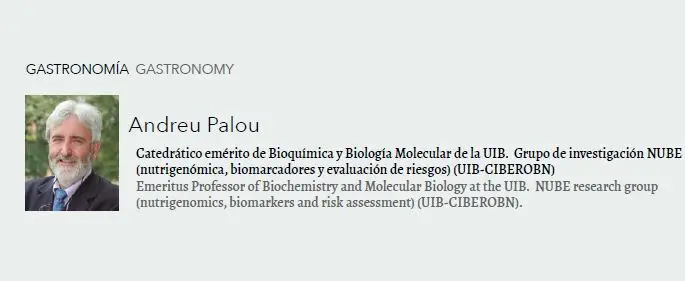
We perceive that our civilization is in crisis in the face of anthropogenic (human-generated) climate change. In Europe, even more than in other regions of the developed world, we have realized that, for the first time in 200,000 years of human history, we are severely out of sync with nature and the health of the planet we live on. On Earth, we have already exceeded the limits of resource exploitation, and we are well aware that the sustained existence of humans and other species is seriously threatened. The challenge is enormous, and, not fantastically, we in the European Union (EU) are already facing it with the so-called Green Pact (Pacto Verde). This initiative comes with a roadmap accompanied by extraordinary investments (including 30% from the Next Generation EU funds) that will transform the EU into a competitive and efficient economy in which progress and well-being occur dissociated from the consumption of natural resources. The goal is for net anthropogenic greenhouse gas (GHG) emissions to cease by the year 2050, pollution to become imperceptible, and for us to rely on the values of ‘one health’ or global health (human, animal, and environmental). This is an endeavour in which changes in nutrition play an essential role.
The F2F (from Farm to Fork; de la granja a la mesa) food strategy is at the heart of the European Green Pact. The agricultural sector generates one-third of GHG emissions, consumes large amounts of natural resources, causes biodiversity loss, and has negative impacts on health. And on top of that, it does not provide fair economic returns and decent livelihoods for those engaged in the primary sector, who already have an elevated average age of 57 years. The goal is to steer our food systems towards sustainable activity and progress, creating new opportunities along the way. Additionally, the agri-food sector presents, perhaps second only to artificial intelligence, an optimistic future. Scientific advancements and new technologies, together with greater social awareness and increased demand for sustainable and healthy foods, will benefit everyone.
We must not allow denialist slogans and misleading messages to creep into this river recently stirred up by agricultural mobilisations, with many tractors occupying the streets of Europe, including those of our islands. The legitimate and reasonable agricultural demands should be addressed in the face of some of the changes that are causing concern due to a lack of complicity and dialogue. However, the rectification of certain “green” conditions (such as postponing by one year the 50% reduction in pesticides and the measures for regenerating agricultural soils) of the Common Agricultural Policy (CAP) for farmers and livestock breeders who receive direct aid should not convey a misleading message of giving a free pass to turning away from the European agenda. It would deceive everyone. On the contrary, it is important to bear in mind the F2F strategy, including the immediate 2030 agenda. We often remind ourselves that, apart from global warming, it is very cold outside a well-conditioned EU, which can allocate more than a third of its budget to the CAP, mostly focused on sustainable agriculture. This includes actions against climate change, environmental protection and landscape and biodiversity conservation, as well as rural and social aspects, including food quality and health safeguard.
With over 8 billion people in the world already, and projected to reach 10 billion by 2050, the question of whether we can all be fed a healthy diet within planetary boundaries deserves an affirmative answer. And yes, it is, albeit it’s also a yes to numerous agri-food changes and more science and technology. None of it will be possible without improving food production, reducing food waste, shifting production priorities, and adapting dietary habits, including the incorporation of novel foods. There must be improvements in the efficiency and use of fertilizers, pesticides, and other phytosanitary products, as well as soil management. Regenerative agriculture and, in general, ecological or organic options must be promoted. The planned actions on education programs in the EU are also significant because they illustrate the depth of the change. Everything is already on track, despite a certain amount of denialism. By 2030, i.e. just around the corner, emissions should already have been reduced to less than half of those generated in the year 1990. We shall see.
The sustainable and healthy production of food will be accompanied by changes in technologies, food safety and quality, digitalisation and artificial intelligence, the development of alternative sources of food, proteins and other nutrients, shifts in culinary trends and cultural diversity, production in the circular bioeconomy, and numerous other aspects for a food industry focused on innovation, adaptability and a shared commitment to the resilience of the global food system. Among the multiple aspects, I will highlight two: the promotion and control of new foods adapted to a climate change that, to a certain degree, is already irreversible, and the new biotechnological developments (such as those that have made it possible to curb the recent pandemic), emphasizing the technology of ‘gene editing’ through CRISPR/CAS-9 systems and its derivatives, which allow for targeted and precise genetic modifications such as those that can occur spontaneously (although much less frequently) in nature.







Leave A Comment